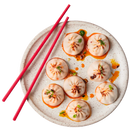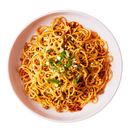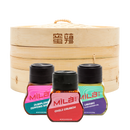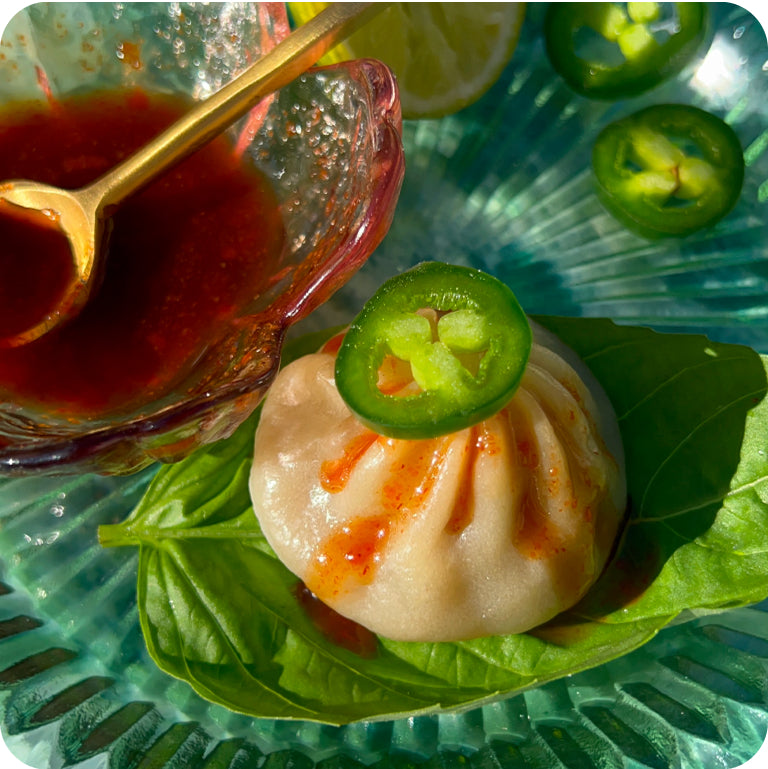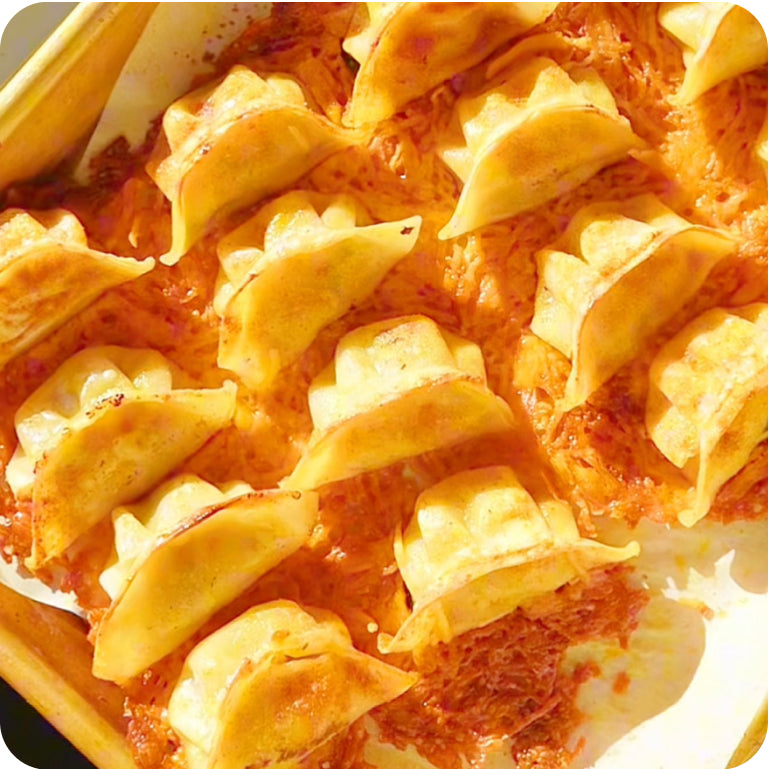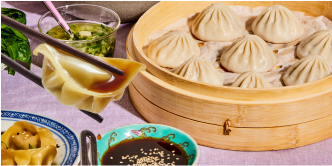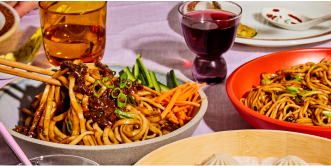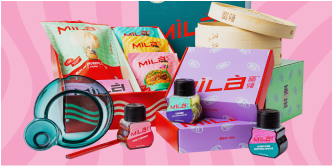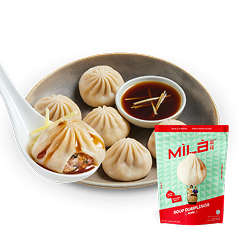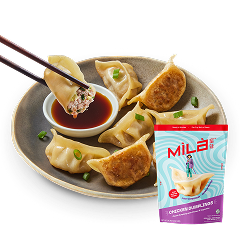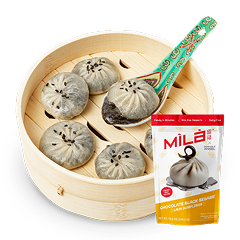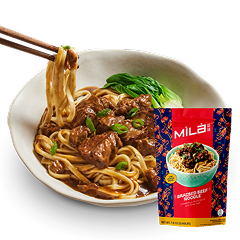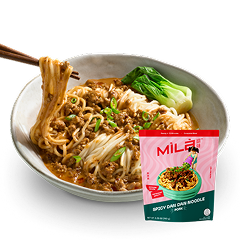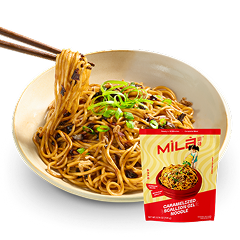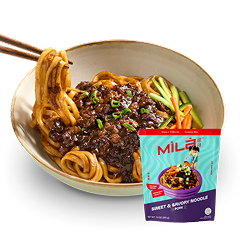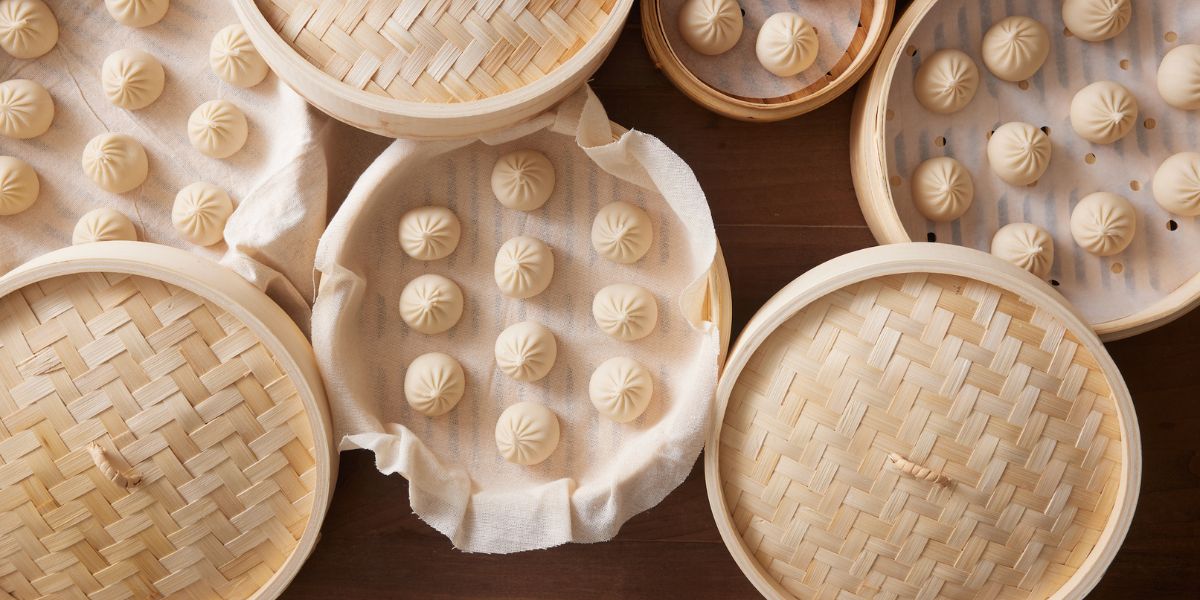Exploring Different Types of Chinese Dumplings and Bao
You can probably just by looking at our website, what we make, and pretty much everything else about us—we love dumplings. However, there’s a massive amount of different types of Chinese dumplings that we absolutely love.
Luckily, this guide is a great starting point so you’ll be able to easily recognize almost any dumpling you find in the wild—in grocery stores, in dim sum restaurants, or even at your friend’s mom’s house for Lunar New Year.
How Many Types of Chinese Dumplings Are There?
Short answer: A lot.
Long answer: A WHOLE lot—just kidding. In actuality, there are dozens of different varieties of dumplings from different parts of China alone. That’s not even including some of the varieties that different communities in the Chinese diaspora have come up with as they moved to other parts of the world.
We aren’t even counting the different fillings and other small variations as separate types of dumplings.
What Counts as a Chinese Dumpling?
Bear with us. We’re trying not to turn this into one of those debates about whether a hot dog is a sandwich.
In the most basic sense, culinary experts generally classify dumplings as a dish that includes pieces of cooked dough wrapped around a filling. Even with that level of specification, there’s still a lot of room for interpretation. For example, we’ve heard some people jokingly say an Uncrustable is technically a dumpling because the edges are crimped.
We’re not going there today.
Instead, we’re focusing on three different subcategories within the Chinese culinary canon: Chinese dumplings, wontons, and baozi. Although all three of these fit within that culinary definition, we’re setting them apart from each other due to their different preparation methods.
Standard Fillings for Chinese Dumplings
There are practically as many dumpling fillings as there are people making dumplings. This includes different savory options, sweet fillings, and even ones with whole fruit or vegetables inside in some cases.
Some typical savory fillings across the different categories include:
- Ground pork
- Ground chicken
- Shrimp
- Bean curd
- Chinese chives
- Napa cabbage
- Scallions
- Mushrooms
On the other hand, these are some common sweet fillings you’ll find in dessert-oriented dumplings in dim sum restaurants:
- Red bean paste
- Lotus seed paste
- Sweet taro
- Custard
- Black sesame
This is not an exhaustive list. Even more, some fillings are more common in different regions of China and the Chinese diaspora than others!
Popular Ways to Prepare Chinese Dumplings
Across the different types of dumplings, there are three preparation methods that you’ll see most often:
- Steaming
- Boiling
- Pan-frying
Some chefs, both in China and in parts of the diaspora, will also deep-fry their dumplings. As delicious as these are, we can imagine that eating too many will suddenly make you very popular with cardiologists for all the wrong reasons.
Types of Wonton Dumplings

Wontons (馄饨) have been around in China for hundreds of years at least. While their exact origins within China are a bit unclear, people have been differentiating them from other types of dumplings since the Tang dynasty—a minimum of 1,100 years ago.
Traditional Pork and Shrimp Wontons
Chances are, almost every single Cantonese or broad-spectrum Chinese-American restaurant you’ve been to has offered some version of these in the classic wonton soup—and we’re here for it. To us, few things feel more like a warm hug on a cold winter day than a steaming hot bowl of broth with perfectly cooked classic wontons full of savory pork and bouncy shrimp.
However, there are other preparations that chefs in the diaspora have developed with this classic recipe. One of our personal favorites is Gau Gee, a Chinese-Hawaiian take on the classic that folds the wontons into a rectangle and deep fries them. It’s definitely not something to tell your doctor (or your parents) about, but it’s a perfect late-night munchy and a byproduct of innovation.
Vegetarian Wontons
These are a common sight at dim sum restaurants and chains like Din Tai Fung. Usually, vegetarian wontons have bean curd as the main protein and binding agent, along with glass noodles and vegetables like bok choy, wood ear mushrooms, spinach, and jicama. They’re also just as versatile as their meatier counterparts.
One of our favorites is Sichuan-style red oil wontons, which bring a new meaning to the phrase “hurts so good.” These beauties come with a spicy, chili oil-based sauce and are boiled to perfection. While this style can work with standard wontons as well, we love the spicy-umami rollercoaster that comes with each bowlful.
Types of Baozi

Bao, bao buns, baozi, siopao—a bun by any other name would smell as sweet, and taste just as amazing. Baozi (包子) are steamed buns, typically with fillings that can be sweet, savory, or both. They’re about as ubiquitous in China as hot dogs are in New York City, with vendors selling them as snacks or breakfast foods, and they’re finally starting to catch on in other parts of the world.
If we do say so ourselves, it’s about time!
Big Pao
One of the most standard types of baozi, big pao (大包) has its roots in Guangdong and Hong Kong by way of northern Chinese mantou, which is the “mother bun” among all types of baozi. The reason it’s called “big pao” is because they’re larger than standard bao, typically measuring about 4 inches in diameter.
These springy, tender beauties typically feature ground pork or chicken, along with vegetables like onions and mushrooms. However, some versions around China might also have Chinese sausage, hard-boiled eggs, or other additions that make it feel like a full meal.
Cha Siu Bao
These baozi have gone so mainstream that it’s not unusual to find them in large grocery store chains—and for a good reason. Cha siu bao (叉烧包) had humble origins in Guangdong, but they now enjoy worldwide popularity and are a dim sum staple.
The reason why they’re so popular may have something to do with the mouthwatering sweet-and-spicy barbecue pork filling. Combined with the pillowy-soft dough, it makes for an unforgettable flavor combination and a fast-selling item at Chinese bakeries across the world.
Shen Jian Bao
Originally from Shanghai, shen jian bao (生煎包) are a type of pan-fried dumpling that are like Xiao Long Bao’s bigger, thicker cousin. They also have a hot and juicy center and make for an excellent lunch, dinner, or 1 a.m. snack attack solution.
Most of them have minced pork and vegetables like cabbage or chives in the center, along with the hot soup that’s gelatinized during the assembly process. Contrasting against the delightfully tongue-searing center, however, is a crispy bottom thanks to the pan-frying process.
Much like Xiao Long Bao, these are a common sight in dim sum restaurants, where master chefs can make hundreds of them every day. However, also much like xiao long bao, the best types of shen jian bao are the ones your grandma makes.
Steamed Custard Bao
This one is more of a dessert, but that won’t stop us from eating a dozen of them whenever we go out for dim sum with our friends. Also known as nai wong bao (奶黄包), these steamed treats have a custardy filling that makes for a creamy contrast to some of the acidic and spicy dishes you might eat at a dim sum restaurant.
The secret to the delicately sweet center on these is a base of milk and egg yolks. Together, they make for a rich custard that is the perfect way to cap off almost any meal.
Red Bean Bao
Another dessert-oriented bao, dou sha bao (豆沙包) features sweet red bean paste inside a fluffy steamed bun. While their exact origins are a bit murky, they’re enjoyed all across China as a dessert—or for breakfast if you have a sweet tooth.
These are stars of the dessert section on most dim sum menus because they provide a delicate, filling finish without some of the cloying sweetness one might expect from chocolate or cake (or chocolate cake).
Types of Chinese Dumplings

Jiaozi
One of the most ubiquitous types of Chinese dumplings, jiaozi (饺子) are usually steamed or boiled and have been enjoyed across China for millennia. They often have a mixture of minced pork, shrimp, vegetables, mushrooms, and aromatics, along with a paper-thin dumpling wrapper.
They’ve since become a staple in Chinese restaurants around the world, where they’re typically served with a soy sauce-based dipping sauce. While many menus will treat them as appetizers, that hasn’t stopped us from eating six (or 16) as a standalone meal during our college days.
Guo Tie
Also known as potstickers, or as those fried dumplings you find at buffets in some circles, guo tie (锅贴) are almost the same as jiaozi, with the most notable difference being that guo tie are pan-fried. Some chefs and trendy social media channels will use a slurry made of water and cornstarch to add extra crunch to the bottom of each dumpling, but this is entirely optional.
A combination of ground pork and napa cabbage is the most popular filling for these dumplings, but we’ve also heard of ground chicken or ground beef making good substitutes in a pinch.
Shumai Dumplings
One of the only dumplings you’ll find with an open top, shumai dumplings (烧卖) are a dim sum classic that originated in Guangdong tea houses. They’re usually served with steamed minced pork or shrimp and are utterly addictive.
Given their origins and their status as a dim sum staple, they’re popularly paired with different blends of oolong tea.
Shuijiao
Otherwise known as boiled dumplings, shuijiao (水餃) are served on their own, without broth or soup (but occasionally with dipping sauce). They might look a bit familiar if you’ve ever had Italian tortellini or Russian pelmeni. However, what sets these northern Chinese delights apart from other types is the sheer variety of different fillings they can have.
Without including any specific combinations, just a few of the most popular fillings include:
- Shrimp
- Cucumber
- Cabbage
- Ground pork
- Vermicelli
- Bean sprouts
- And infinitely many more!
Har Gow, Dumplings with Shrimp
These dumplings are distinct because their translucent wrapper gives them an almost pinkish hue when they’re cooked. Har gow (虾饺) are from Guangzhou and almost exclusively use shrimp as their main source of protein, along with minced bamboo and ginger.
In dim sum restaurants, har gow and shumai go together like Abbott and Costello. Or, like Timone and Pumbaa. Whichever duo you choose for comparison, these two dumplings pair beautifully together when you’re about to take your first bites.
Fun Guo
Another delicacy from Guangdong that’s popular in Hong Kong, fun guo (潮州粉果) are close cousins of har gow, but with a very different set of fillings. Instead of shrimp being the star of the show, these steamed beauties feature chopped peanuts, chives, and ground pork. They make a great first step outside your comfort zone at a dim sum restaurant and are an understated treat.
Soup Dumplings
We saved the best for last!
Okay, maybe we’re a bit biased, but we have a good reason to be. Xiao long bao (小笼包), or soup dumplings, are a Shangai staple that have rightly taken their place as one of the best-known dumplings in the world. They’re relatively thin-skinned and almost always steamed, but the savory, flavorful soup inside them has made them a staple in our kitchens (and our hearts).
There are plenty of different filling options—we’re partial to the classic pork, chicken, or pork and shrimp together, but we also like innovations like a creamy corn soup filling.
Looking for Where to Buy Soup Dumplings Online?
Did you know you could buy soup dumplings online? We offer multiple different filling options so you can enjoy your own taste of dim sum at home, all within a matter of 11 minutes. Order MìLà soup dumplings today and start your restaurant-quality journey!


